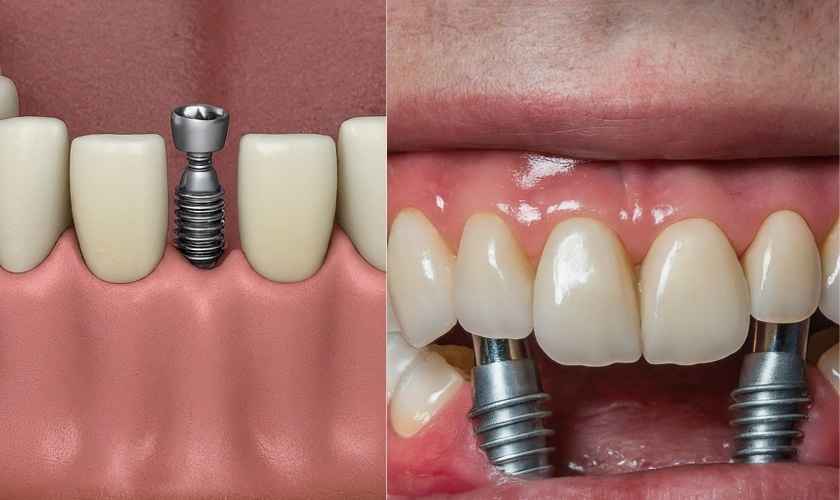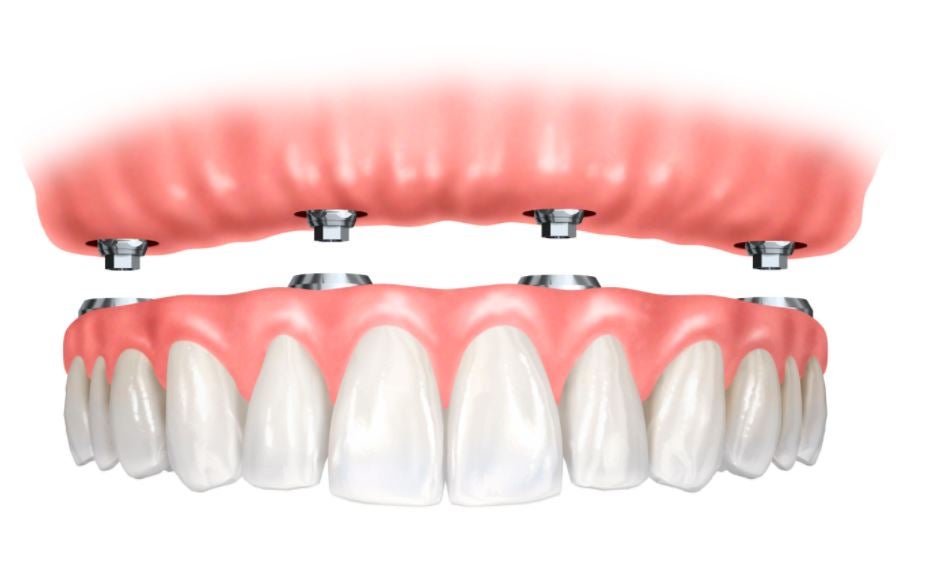The 7-Second Trick For Dental Sense
Table of ContentsThe Best Guide To Dental SenseSome Known Details About Dental Sense The Dental Sense PDFsNot known Facts About Dental Sense
are clinical devices operatively implanted right into the jaw to restore a person's ability to chew or their look. They offer assistance for artificial (phony) teeth, such as crowns, bridges, or dentures. When a tooth is shed due to injury or disease, a person can experience problems such as quick bone loss, malfunctioning speech, or changes to eating patterns that lead to discomfort.Oral implant systems consist of a dental implant body and oral implant abutment and may likewise include a joint addiction screw. Wisdom tooth cavity. The dental implant body is surgically put in the jawbone in location of the tooth's origin. The dental implant joint is usually affixed to the implant body by the joint addiction screw and prolongs with gums into the mouth to sustain the attached synthetic teeth
(https://dentalsense1.mystrikingly.com/blog/transform-your-smile-with-dental-implants-root-canal-procedures-and)Framework of The Oral Implant System choosing oral implants, talk with your oral copyright concerning the prospective benefits and risks, and whether you are a prospect for the procedure. Things to think about: Your overall health is an important consider identifying whether you are a great prospect for dental implants, the length of time it will certainly require to heal, and for how long the implant may remain in area.
Cigarette smoking might influence the healing procedure and decrease the lasting success of the implant. The recovery process for the implant body may take numerous months or longer, during which time you commonly have a short-term abutment in area of the tooth. the oral implant treatment: Carefully adhere to the dental health instructions provided to you by your dental company.
Facts About Dental Sense Revealed
Implant failing can lead to the demand for an additional operation to take care of or change the implant system. Brings back the capacity to chew Brings back cosmetic appearance Helps keep the jawbone from diminishing because of bone loss Maintains the wellness of the surrounding bone and gum tissues Helps maintain adjacent (neighboring) teeth steady Improves lifestyle Damage to surrounding all-natural teeth throughout dental implant positioning Injury to the surrounding tissues during surgical treatment, such as sinus perforation Injury throughout surgical procedure (as an example, crack of bordering jawbone) Poor feature, such as seeming like the teeth do not bite together usually An experience that the tooth hangs or twisting in place resulting from a joint screw loosening Implant body failing (looseness of the dental implant body) as a result of systemic infection, which might be extra likely in individuals with unchecked diabetics issues as a result of neighborhood infection in bone and gums supporting the dental implant body as a result of postponed recovery, which might be extra likely in patients who smoke Trouble cleansing the gums around the dental implant, causing inadequate oral hygiene Unattended gum illness Post-surgical numbness as a result of nerve impingement or damage Always alert healthcare companies and imaging technicians that you have oral implants before any kind of magnetic resonance imaging (MRI) or x-ray procedures.
FDA is not knowledgeable about any kind of negative occasions reported for MRI or x-ray treatments with oral implants. Dental implants systems are usually constructed from materials that follow worldwide consensus requirements of the International Organization for Standardization (ISO) or ASTM International. These requirements have details of what makes a risk-free product.

An oral implant is a structure that replaces a missing tooth. With screw-like tools, the doctor inserts an implant right into the jawbone, and it acts Discover More as a support for a man-made tooth, called a crown. A device called an abutment connects the man-made tooth to the dental implant. The crown is custom-made to fit the individual's mouth and match the shade of their teeth.
Top Guidelines Of Dental Sense
Some people are not qualified for dental implant surgical procedure. It is for oral specialists to run on people with: intense illnessuncontrollable metabolic diseasebone or soft tissue illness or infectionIf these problems are fixed, a person can have the surgery. In, oral surgeons avoid operating individuals with: If individuals with any of the above undertake dental implant surgical treatment, there is a greater threat of the dental implant falling short.

Dental implant surgical procedure is a personalized process. It's not the very same for everyone. Yet the adhering to provides a general review of what you can expect your dental practitioner, oral specialist, periodontist or prosthodontist to do: Place the implant surgically. Offer you time to heal. Affix the blog post and last crown, bridge or denture.
Next, your doctor will carefully position the oral implant right into your jaw. If your implant is near the front of your mouth, your dental professional will make a short-lived tooth for you to use up until you heal.
Dental Sense - An Overview
Your copyright can tell you what to anticipate in your circumstance. Throughout the healing phase, your jawbone needs to fuse to the dental implant. This procedure, called osseointegration, is crucial for stability and lasting success. This process can take anywhere from three to 9 months. Sometimes, it may take longer.
Once your dental implant heals, your dental expert can attach the joint (small adapter article) and your last reconstruction (crown, bridge or denture). This typically takes concerning one hour to complete and might require a 2nd small surgical procedure. You shouldn't feel any pain during your oral implant treatment due to the fact that your service provider will certainly make use of medication to numb your gums.